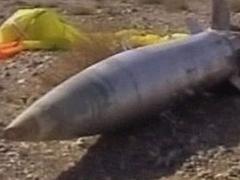

The missile is 17 meters (56 feet) long, and is comprised of 3 parts, including a “space laboratory.” According to an Israeli expert, the launcherresembles that of the Zelzal, which Iran transferred to Hezbollah and was used in the so-called “Second Lebanon War” in 2006. Unlike the Shahab-3ballistic missile, the Kavoshgar 2 runs on solid fuel. The Israeli expert stated that it functions as a 2 phase rocket, and does not have the capacity of launching a satellite, despite Iran’s claimsthat this will allow them to launch their “Omid” satellite.
This technology may be very close to being Tehran’s first functioning satellite or intercontinental ballistic missile. These types of weapons will not be easily stopped with yesterday’s defensive systems. Even if detected in time they can easily carry weapon payloads of nuclear or biological materials with the ability to rain down on a given target population and military targets. Such agents, if shot down, can still wreak serious damage. Further, soon Iranian missiles, particularly given the help Iran is receiving from its friends in Moscow and several European countries, will also be able to orbit the globe with sensors and cameras.
So what does this mean? Forget Iran’s being bent on nuclear domination; this missile can be very dangerous in the hands on an enemy power. This threat holds true for all of today’s nations, with the possible exception of Lebanon with which Iran has just signed a mutual defense pact. Most obviously, the United States and Israel should feel threatened, as they are seen by Iran as being the “Great” and “Little” Satans, respectively. Yet, European nations should, too, feel threatened. Appeasing Iran will not make them any safer in the long run, and perhaps not even in the short run. (Though then again, we all know how much Europeans like appeasement). Even the Arab nations ought feel threatened at Iran’s growing military strength, as the Arab nations, with the exceptions of Syria and Lebanon, are of the Sunni faith, whereas Iran is Shi’i (Lebanon is a conglomerate of Christian, Sunnis, Shiites, and Druzes; Syria is Allawi controlled). Even Iran’s allies should be wary; in an anarchic world, today’s friends may easily become tomorrow’s enemies.Â
Iran’s growing technologies should be concerning, not because of the posture of the nation’s statesmen, who may in fact be good, peace-loving individuals, but rather because of the potential it would put in the hands of statesmen. Statesmen can change, but if the technology is available to them the threat only increases. So what is the best response to this potential threat? Develop our own technologies and make sure that we are more than one step ahead of them. Let us not forget, Iran is a country of very intelligent individuals, including many engineers, who, if set on our destruction, may succeed if we are not at the ready.
- ileaרn - 10/16/2010
- Wrap Up - 9/16/2010
- ICT Conference Summary of New Media Session - 9/16/2010






2guidelines